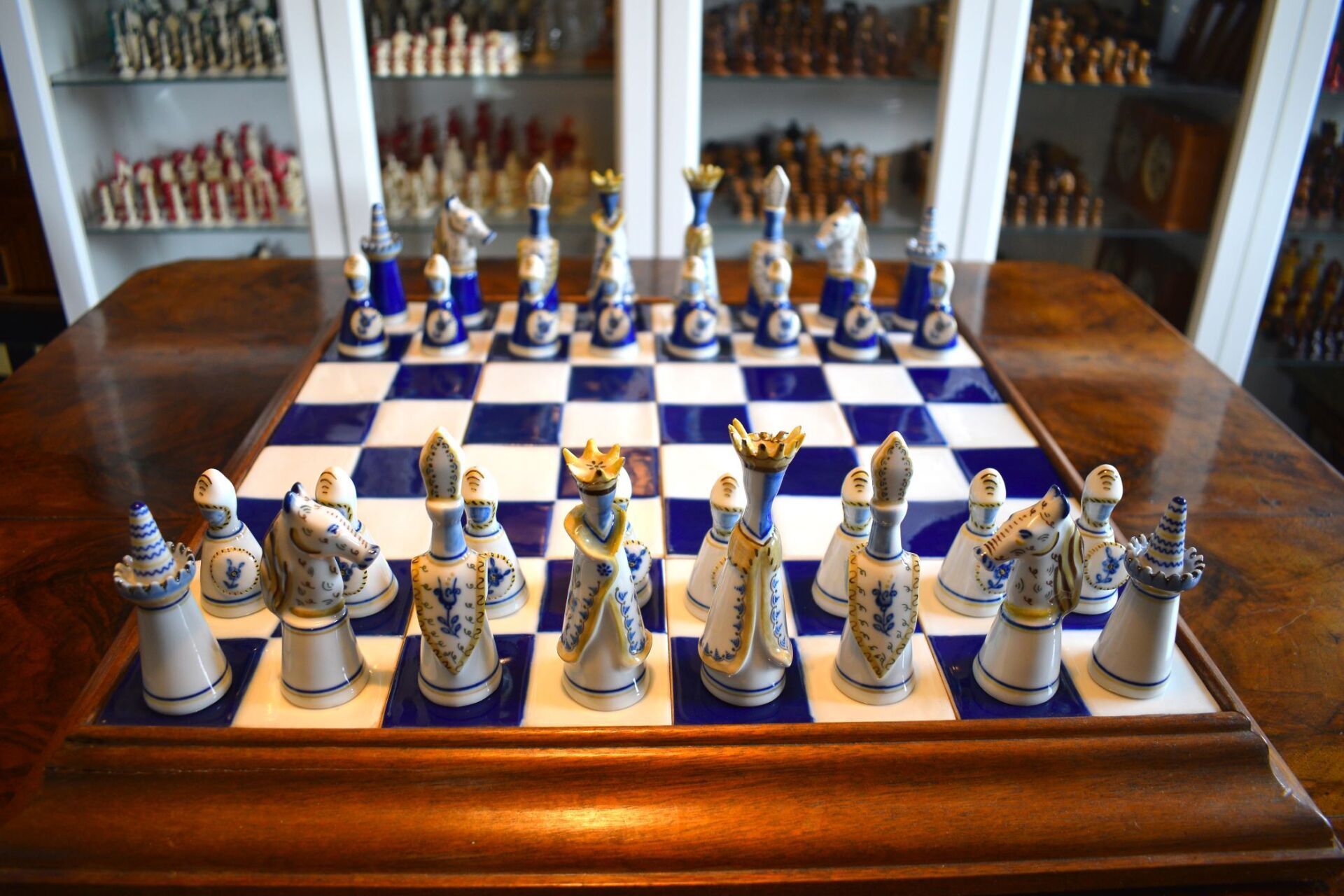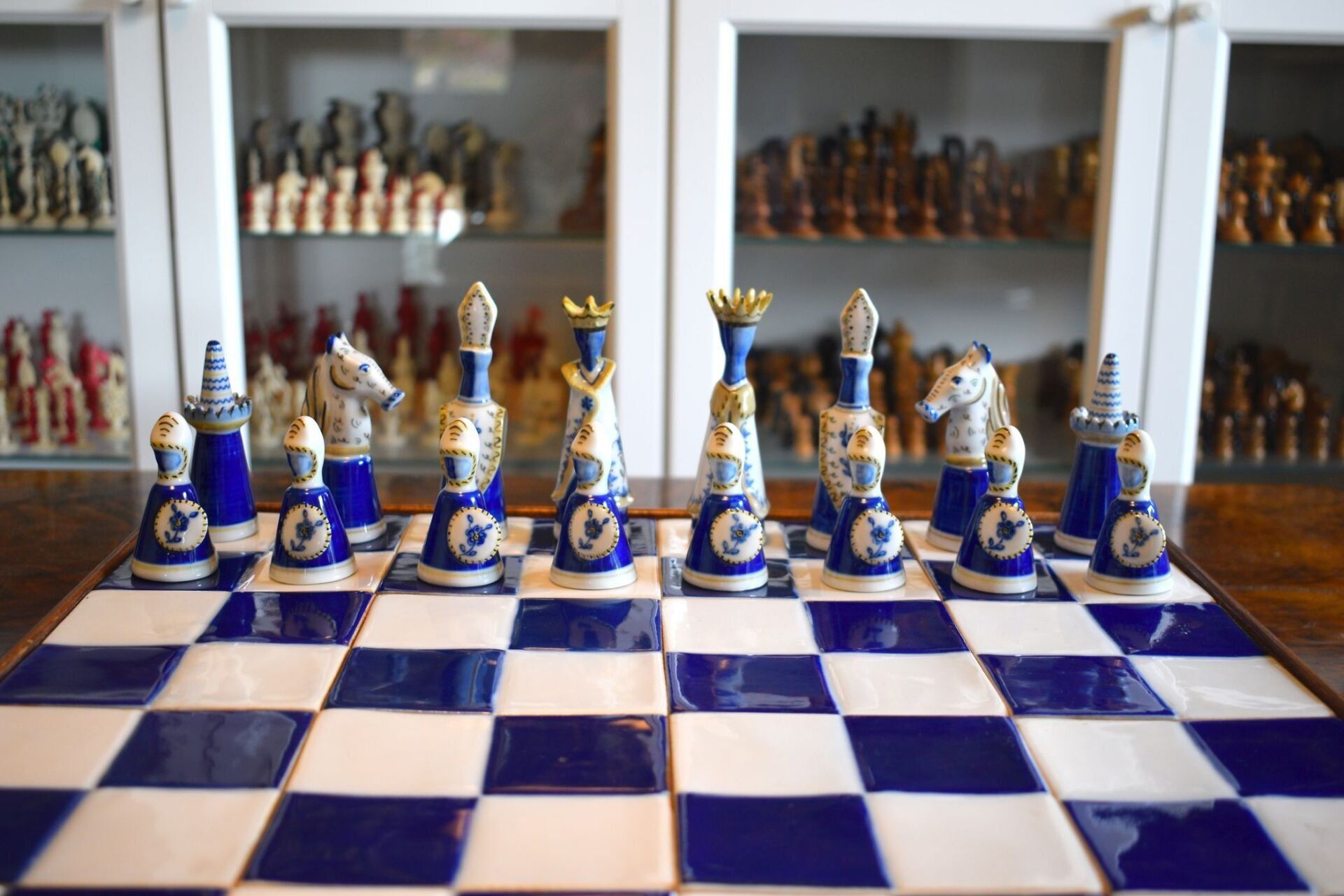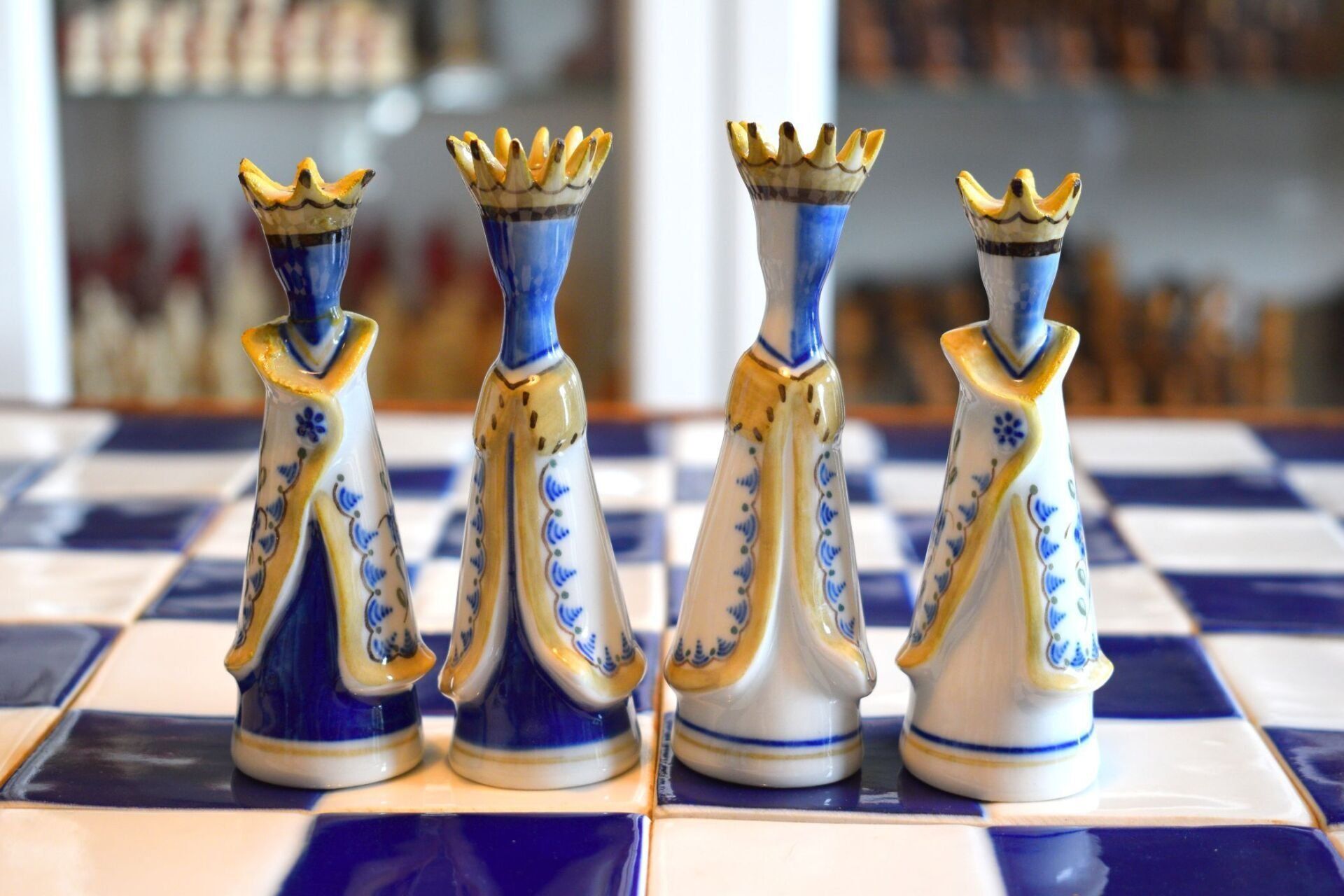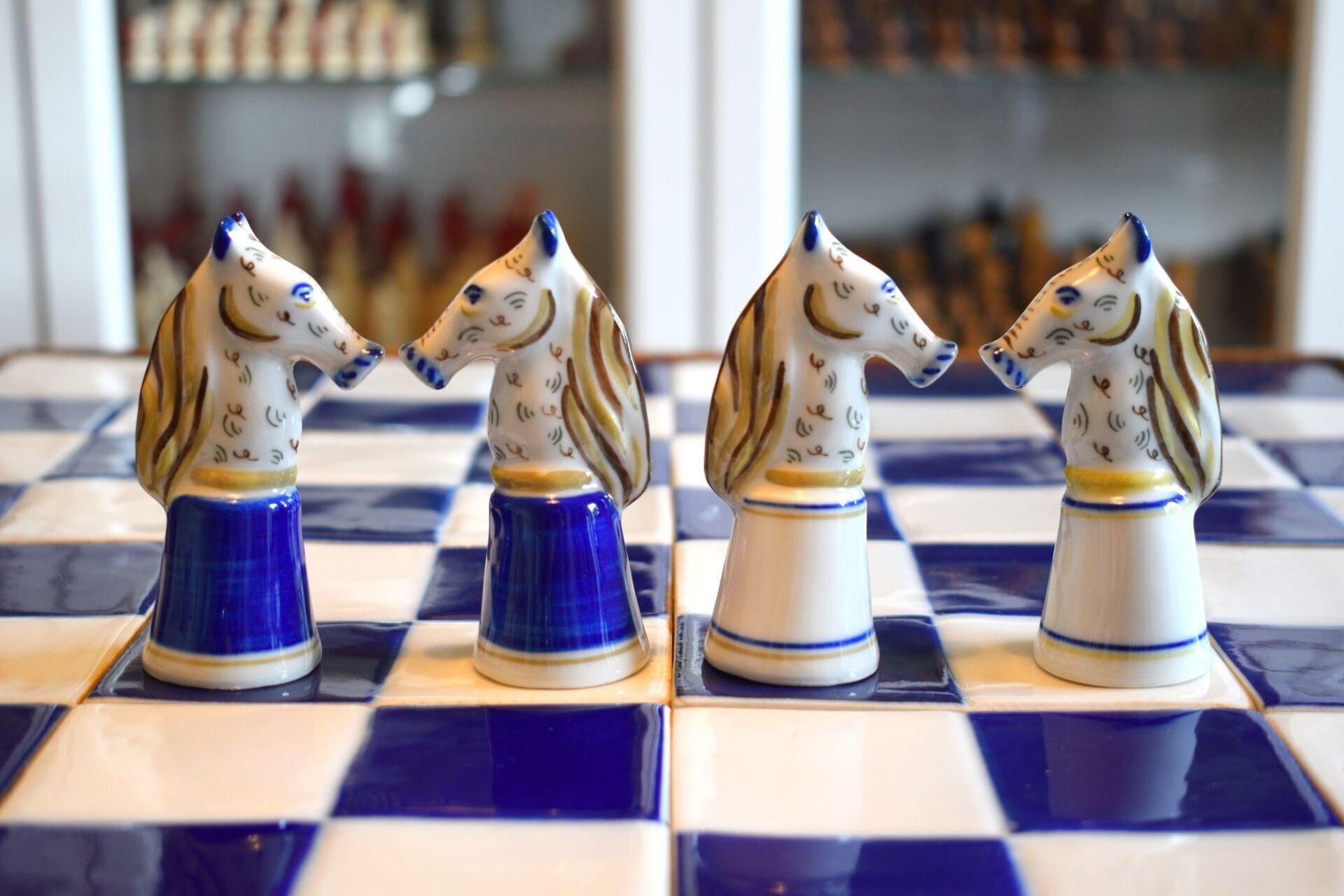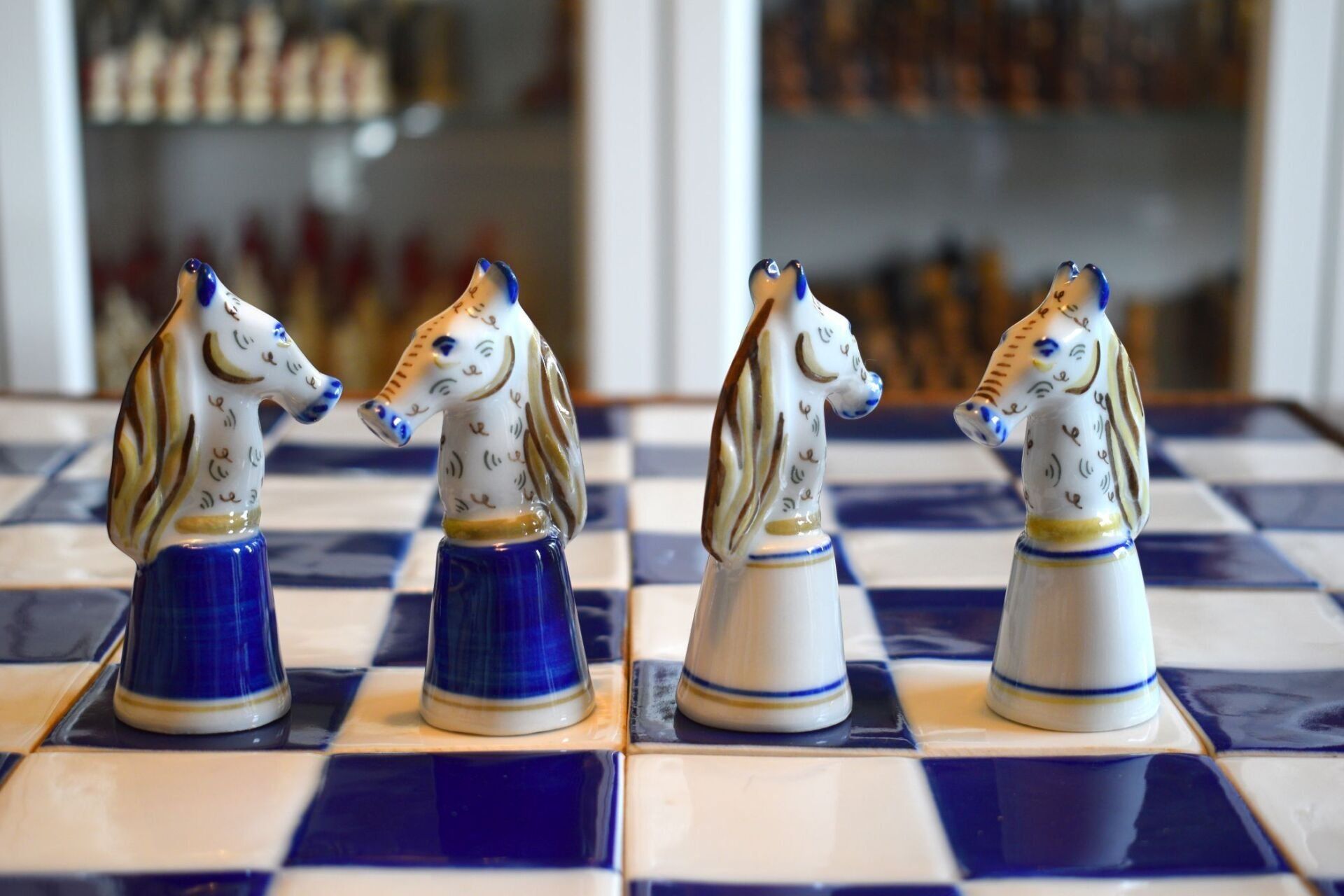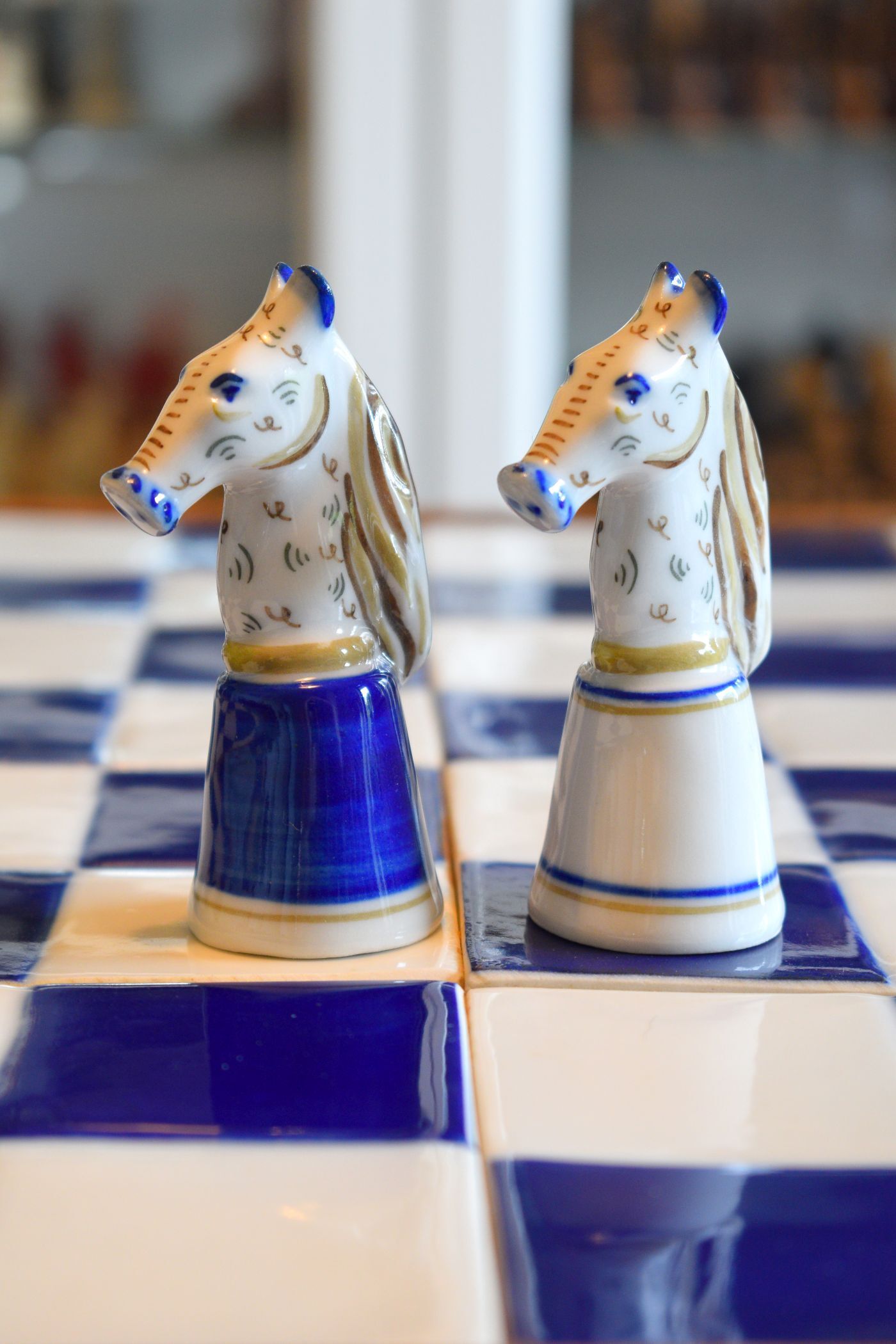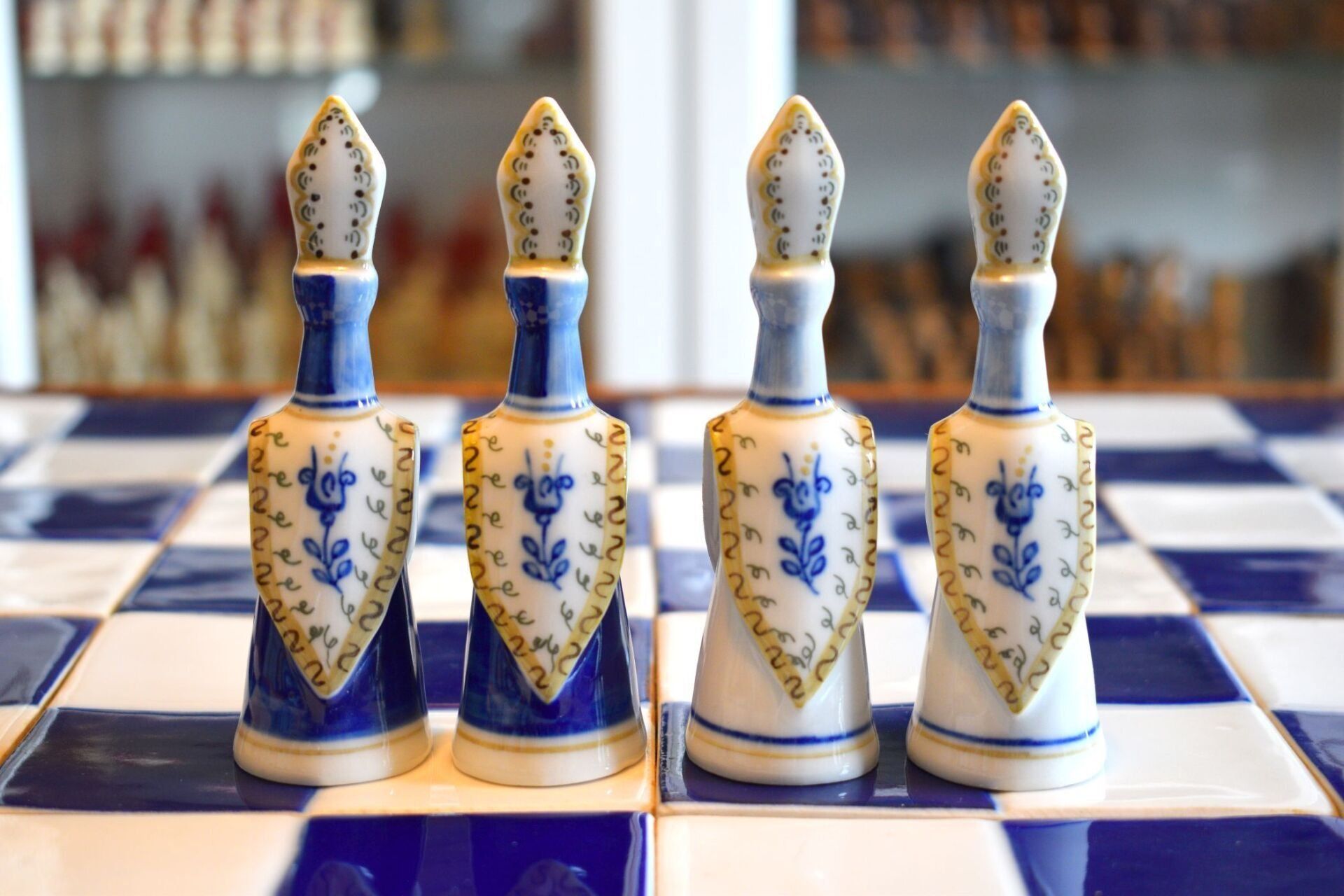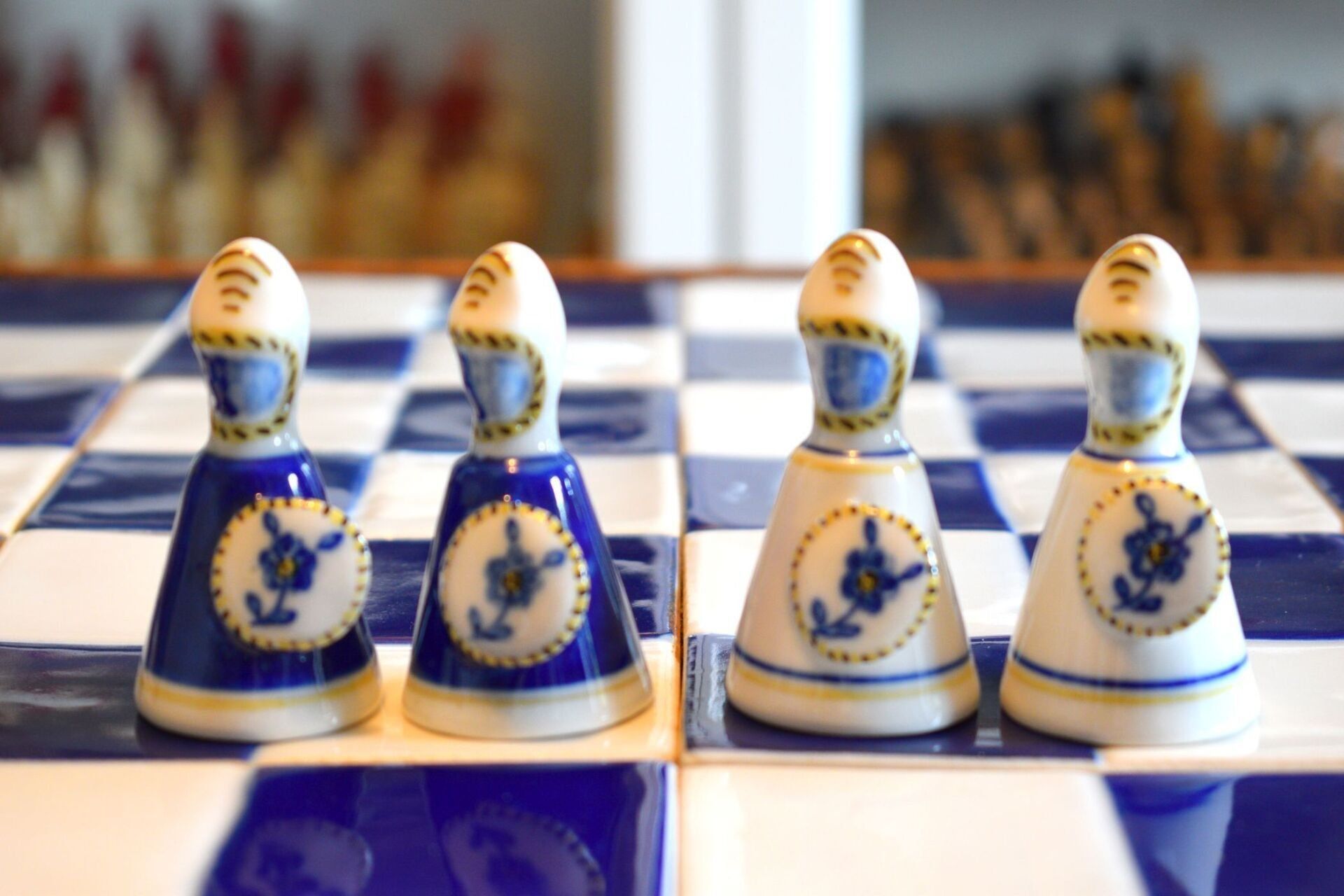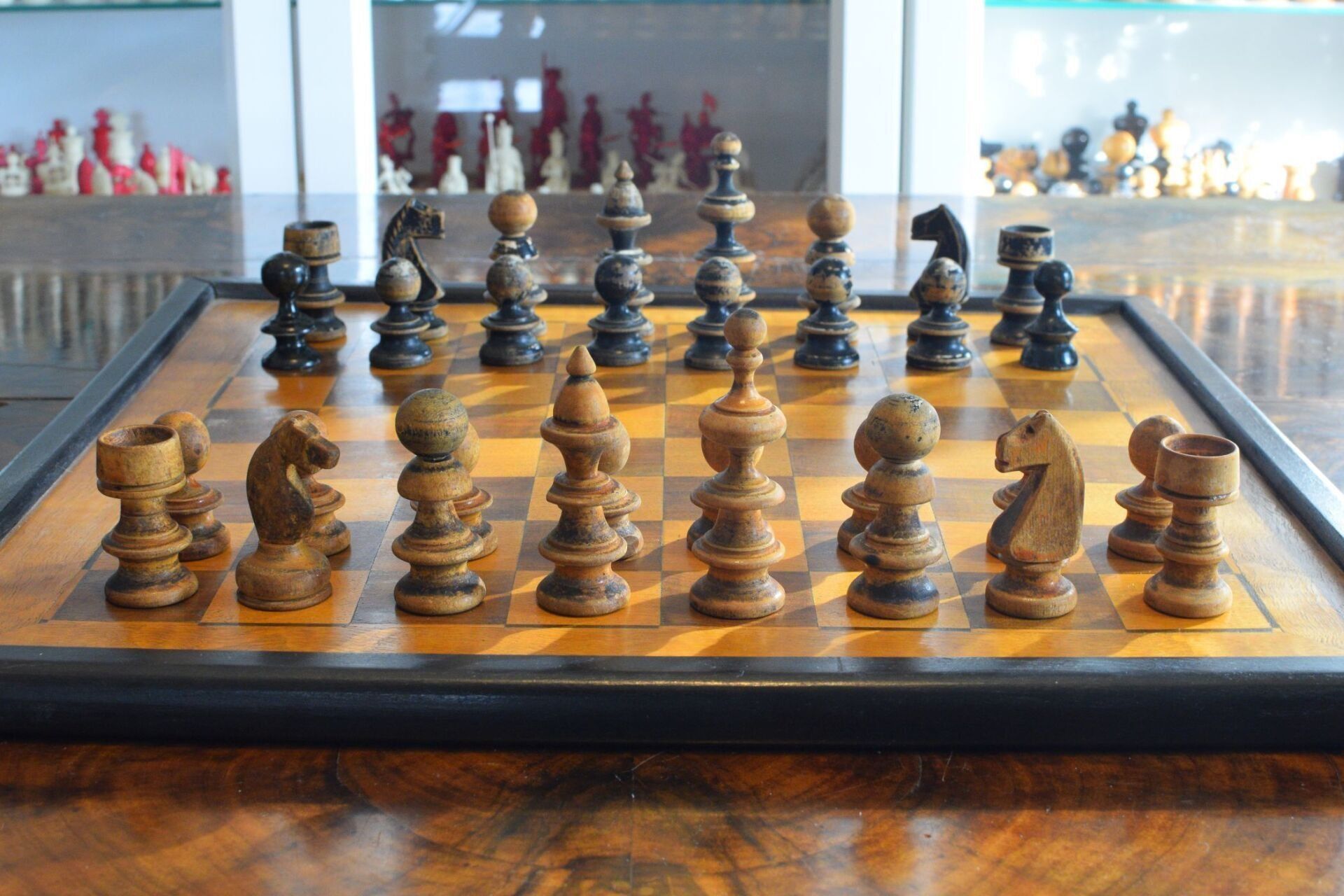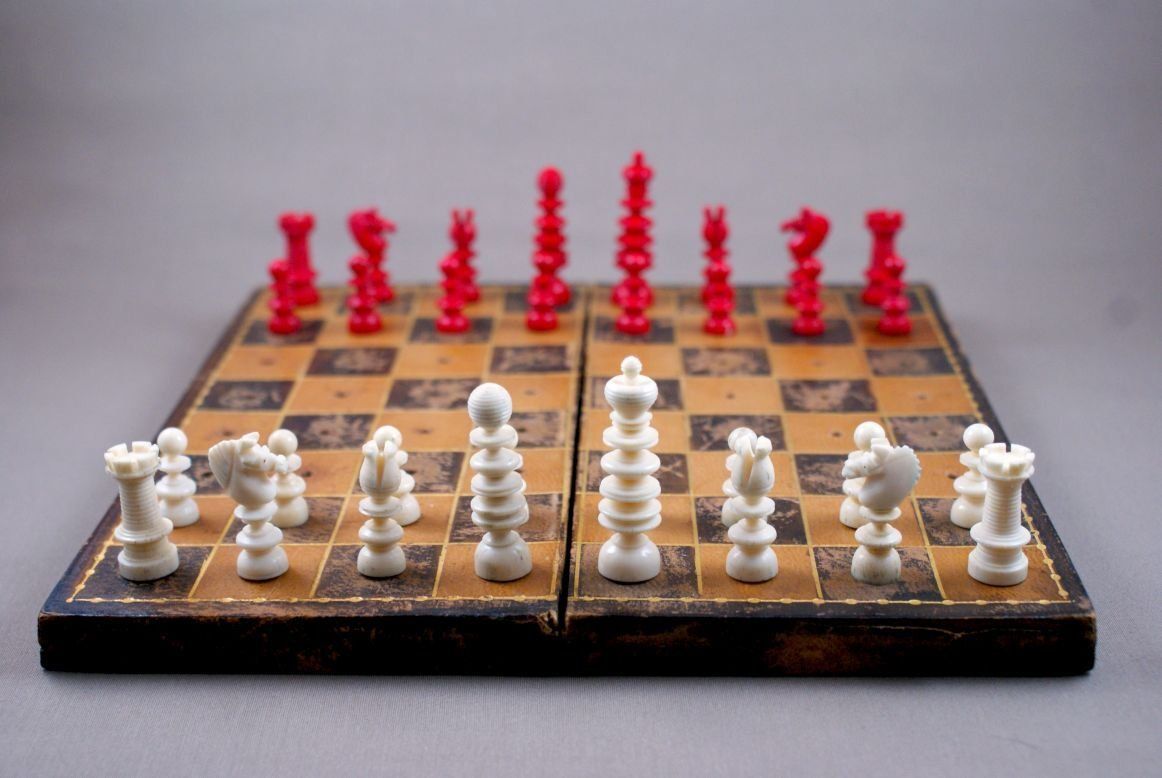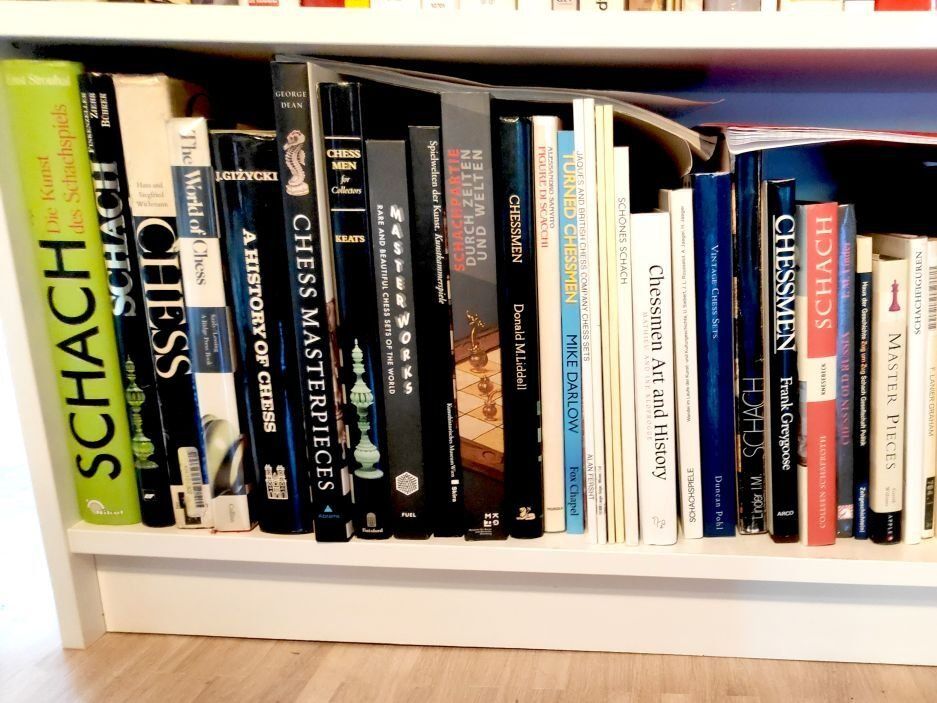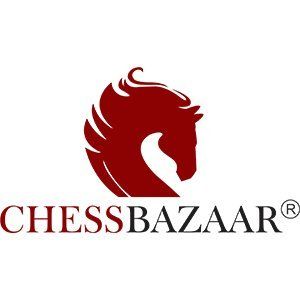Portuguese Porcelain Chess Set (Viana do Castelo), ca. 1960-1980
A Portuguese porcelain chess set made in Viana do Castelo in the North of Portugal by the local porcelain factory. These chess sets were made sometime between 1960 and 1980. Nowadays, Viana porcelain chess sets were only produced in small numbers and, thus, are rare and not easy to come by. The king size is 10.3 cm, i.e. slightly bigger than 4".
The style of the chessmen is typical for Portuguese ceramics and reminds of "azulejos", the typical Portuguese blue and white ceramic tiles (even though the name does not refer to "azul" (blue), but has its origin in the arabic "az-zulaiǧ", which means "small polished stone" or "tile work"). All pieces are handpainted in the traditional three colors that were also used for the old faience pieces from the 19th century - cobalt blue, ocher and green. Apart from a few spikes missing in the white king's crown the set is in pristine condition. The pieces are interesting as they are designed on the dividing line between abstract and concrete form. A small, but neat detail are the pawns, which are little soldiers bearing shields decorated with a blue flower, one of the three main motives in Viana porcelain (besides religious motives and coats of arms of old-established local families).
The set came in the original wooden box in which the chessmen are stored on separate trays covered in blue velvet. It also came with a 50 cm square blue and white ceramic tile chess board with a solid wooden frame.
The Viana do Castelo factory was founded in the Darque district and began producing pottery in 1747. It was closed in 1855 after a crisis triggered by the Napoleonic wars. It was not until ninety-two years later, in 1947, that the factory was refounded in the Meadela district with the aim of reviving the tradition of artistic ceramics in the style of Viano. Viano ceramics are made of hard porcelain and are characterized by the fact that they are entirely hand-painted and fired at a temperature of 1400º, which gives them a resistance that is unique. In 2010 production was suspended and the factory was soon afterwards completely closed. Today, there is only one shop and gallery next to the old factory grounds, selling off whatever remains from the old production, and a small museum where some of the most beautiful and valuable pieces are exhibited.


